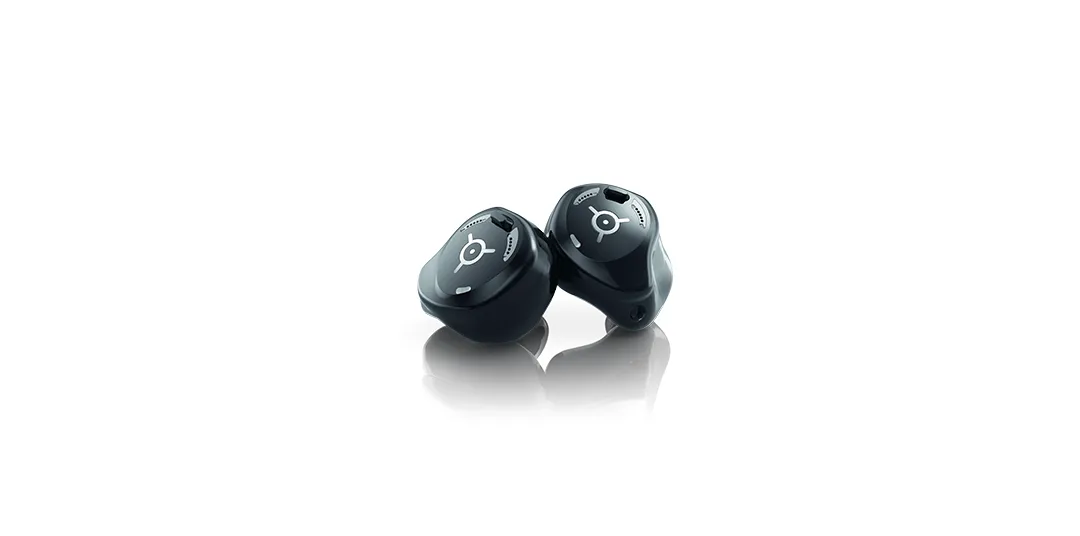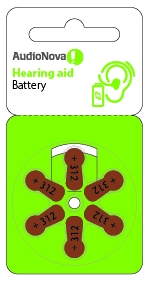A new hearing aid – What happens now?
Ringing phones, street noises, birdsong: A good hearing aid will bring the world of sounds back to life. If you’ve gotten used to living with hearing difficulties, so many sensory impressions can be overwhelming at first. Don’t be put off. Give yourself plenty of time to adjust to your new hearing aid. This includes getting used to the physical sensation of having the device in your ear, apart from the actual sensation of hearing.
One thing is certain: After a period of adjustment, you’ll never want to be without your hearing aid again!
What can I expect in the first few weeks?
Depending on the severity of your hearing loss, your surroundings may simply sound muffled, or you may be unable to pick out certain sounds. With a hearing aid, your pattern of perception will change abruptly. During the familiarization phase especially, everyday noises may sound surprisingly loud. Your own voice might also sound different. The sound of familiar noises may also change in certain circumstances. Don’t be put off!
Wearing a new hearing aid takes some getting used to, especially at first. The familiarization phase includes getting used to the physical sensations, as well as the new sense of „hearing“. Your ears first need to get used to the sensation of wearing a hearing aid. The brain, too, suddenly has to start perceiving and processing many stimuli again. It may be a long time since you last heard the full range of sounds. Many of the background noises that people with normal hearing have learned to ignore will sound new to you, so to begin with, you’ll find them far harder to shut out.
While you are familiarizing yourself with the many acoustic stimuli around you, your brain will in time re-learn how to suppress background noise and focus on important sounds. Be patient. After a few weeks or months, you won’t even notice that you’re wearing a hearing aid.
What can I expect during the familiarization phase?
Give yourself time
Normally, you suppress unimportant auditory stimuli, such as the rustling of leaves or the tapping of keyboards in the office. However, if you’re no longer able to hear these sounds, the brain forgets how to handle them. The sound-processing centers in the brain therefore need to learn not only that everything sounds different with a hearing aid, but also that they need to filter out certain sounds again. This can take a little time.
Tip
To help your brain get used to normal ambient noise levels again, and to restore its ability to filter, you should wear your hearing aid regularly. It’s important to gain experience and not give up too soon.
You may find it helpful to write down your experiences and problems in a hearing diary. This will allow you to track your personal progress. If you are really struggling, contact your audiologist for advice. It can sometimes be useful to have audiotherapy: ask for more information about it.
Familiarize yourself with how to handle your hearing aid
One important step in getting used to using your new hearing aid on a daily basis is to familiarize yourself with it first. Ask your audiologist to explain how to insert and remove the hearing aid, and practice regularly. Learn how to look after your hearing aid properly, and how to maintain and clean it. Try out the various settings and „listen“ to the differences.
To begin with, use your hearing aid at home
To begin with, use your hearing aid in a quiet setting. This will make it easier for you to pick out sounds and identify them correctly, without being disturbed by noises from the street or conversations. It’s also a good idea to ensure that your everyday environments are as calm as possible.
Tip
There is no need to wear your new hearing aid all day at first. If the sounds become too overwhelming, simply take your hearing aid out for a moment. Start by wearing it for a few hours each day, then increase the length of time each day until you are able to wear it from morning until evening.
Even a walk outdoors can help you practice using your hearing aid. In the open, you can concentrate on many quiet sounds, without high levels of background noise: the rustling of leaves, birds singing, or the splash of water in a stream.
Gradually using technical devices
When you have a quiet moment, try watching TV and listening to the radio with your hearing aid in. We particularly recommend news bulletins for your first attempts. Newsreaders are well trained and articulate clearly. Items follow one after the other, and there is very little background noise in the form of music or sound effects.
Then try phoning a friend. Ideally, have the volume turned down initially, and adjust it as needed during the call. If you need further accessories to help you get the most out of your phone or TV, ask your audiologist for advice.
Take the conversation challenge
The first conversations you have wearing your hearing aid should take place in a relaxed atmosphere. We recommend that you talk to just one or two people and always have the conversation in a calm setting with no background noise, such as a TV or household appliances. Explain to the people you’re talking to how impaired hearing affects communication, and how they can help you in conversations.
There are several useful tips for conversations that may also be valuable in situations in which there is more background noise:
- Choose the right place for listening. The microphones in your hearing aid are generally oriented to the front. If the person you’re talking to is sitting behind you or to your side, you’ll find it harder to understand them. Position yourself opposite the person you’re talking to, ideally face to face. This will also make it easier for you to lip read.
- If the conversation is taking place in a large group, ask the participants to remember the rules of conversation. Speaking clearly and taking it in turns to speak can contribute enormously to understanding. Conversations sometimes develop rapidly. Don’t get frustrated if you’re unable to follow everything. Simply ask someone to sum up what was said.
- Keep an eye on facial expressions and gestures. If you make a conscious effort to watch the mouth of the person you’re talking to, you can learn to translate the movements into words. The brain already uses this technique unconsciously to make sense of mumbled words. With a little practice, you can train and make use of this skill.
The final step: Loud environments
Once you have gotten used to your hearing aid, try wearing it in settings with high levels of loud background noise, such as in the street or in a restaurant. You can also use these settings to see how well you’re able to filter out background noises and hold a conversation.
Better hearing can be an unfamiliar experience
It’s often a person’s friends or relatives who encourage them to have their hearing screened. If a hearing aid is recommended, the important thing is to be patient and to wait for the ideal sound experience to be established. Once a person’s sense of hearing has improved thanks to their hearing aid, hearing aid wearers typically experience the change as a flood of unfamiliar stimuli. After a long period of reduced hearing, it can be surprising just how much noise there is in the world! The new sensation of hearing will not be perfect at first, and for a short while may even be unpleasant. Even the sound of your own voice may initially be disturbing. This is known as the occlusion effect. It is caused by „osteo-tympanic bone conduction“, which can result in the intensification of lower frequencies. The perceived sound is often described as your own voice resonating in your head. To counteract this, the audiologist will individually adjust the ventilation and amplification ratio.
When wearing a new hearing aid, you should give yourself time to adjust to the new sensory impressions. To begin with, it’s a good idea to wear the hearing aid for just a few hours each day. From a technical point of view, the hearing aid itself features various programs that will help you achieve a gradual start.
Dialog and regular support from the audiologist are essential during the familiarization phase. Take things slowly. Give yourself time to leave behind the unwanted silence and enjoy sounds to the full once again.
How can I help the people around me?
Someone with a hearing impairment is given a hearing aid – so far, so good. But it’s not only the technology that contributes to better hearing. The social context is also important. Friends and relatives are a valuable source of support.
What to remember
The most valuable quality your communication partners need is patience. But the person with hearing loss needs it in equal measure. Be patient with yourself, and don’t expect too much too soon. Getting used to wearing your hearing aid will be a slow process – for most people, it is not simply a case of switching it on and hearing well again. After all, hearing is an activity that involves the brain, and the brain must first be retrained.
Concentration is also essential. People with hearing loss typically have to concentrate very hard in order to follow a conversation, especially in a large group. Simply listening „with half an ear“ isn’t an option. Give yourself plenty of time and concentrate as much as you need to in order to follow a conversation. Our tip: Take it easy. With a little patience and concentration, you’ll find you can once again enjoy conversations in larger groups.
Be honest
Being honest and open with the people you’re talking to is just as important. Smiling, nodding, and saying yes doesn't help anyone. It simply builds frustration on both sides. Say openly if you haven’t (fully) understood something – and keep saying it.
It may be hard work, but there’s no way around it. Explain clearly that you haven’t understand, ask people to speak more clearly or paraphrase what they said, or ask them to look at you while they speak. People who don’t have hearing problems won’t all be aware of these simple rules. You may need to point them out more than once to friends or relatives.
How can I train my hearing?
Street noises, railway platform announcements, or the babble in a café can be a challenge. In these situations it’s often hard to understand everything, or to focus on the person you’re talking to. While hearing aids can help, actually understanding what you’re hearing is a task for the brain. Fortunately, the brain can be trained. Below are five practical exercises for everyday situations:
Other Topics
VAC, WCB, WSIB, WorkSafeBC, ADP & ODSP accepted. *Hearing evaluations/tests are free for customers over the age of 18. Fees may apply where specific testing for employment purposes, reports, a copy of your results or the completion of an application is required. See clinic for full details.





.jpg?branch=web_prod)